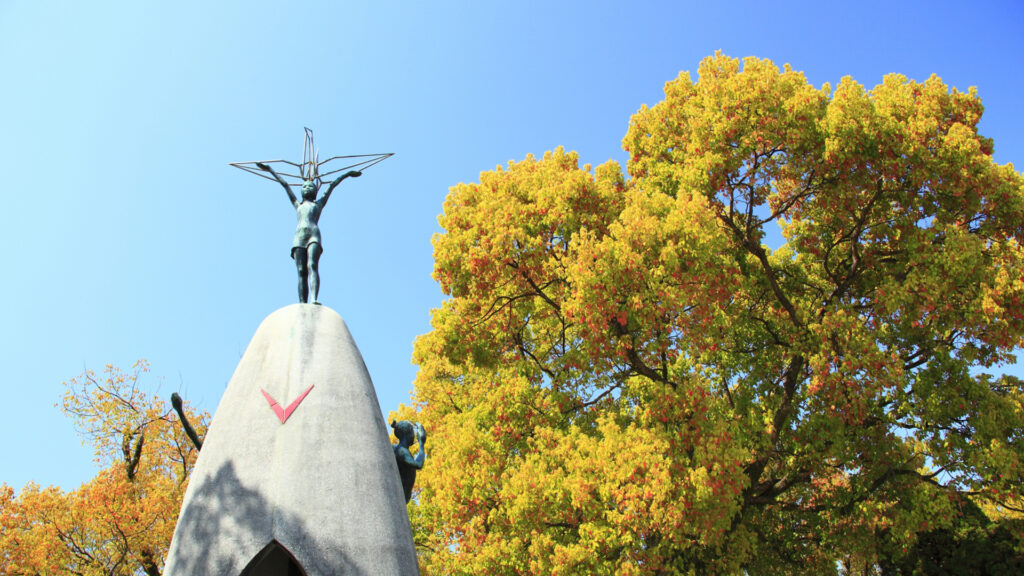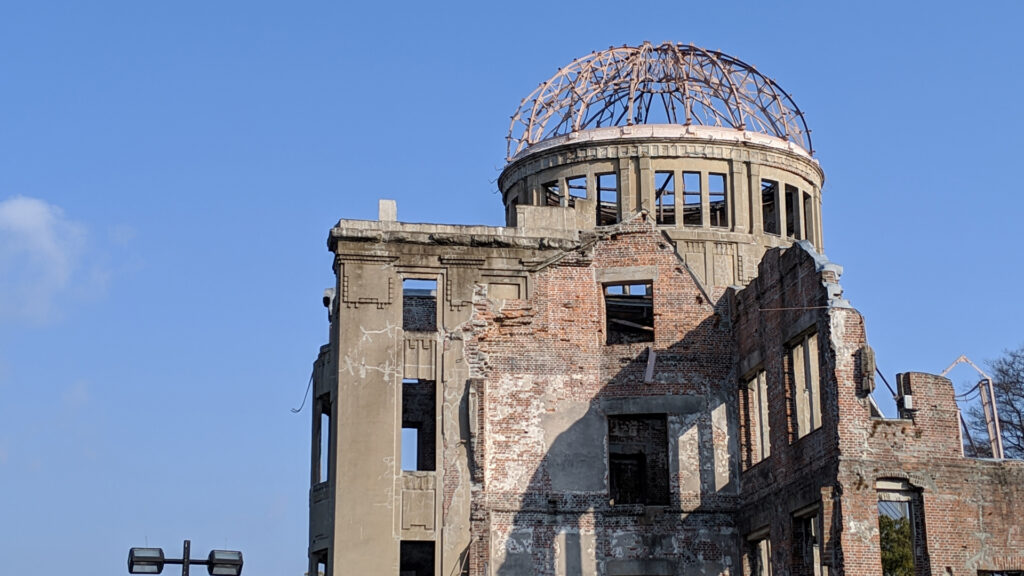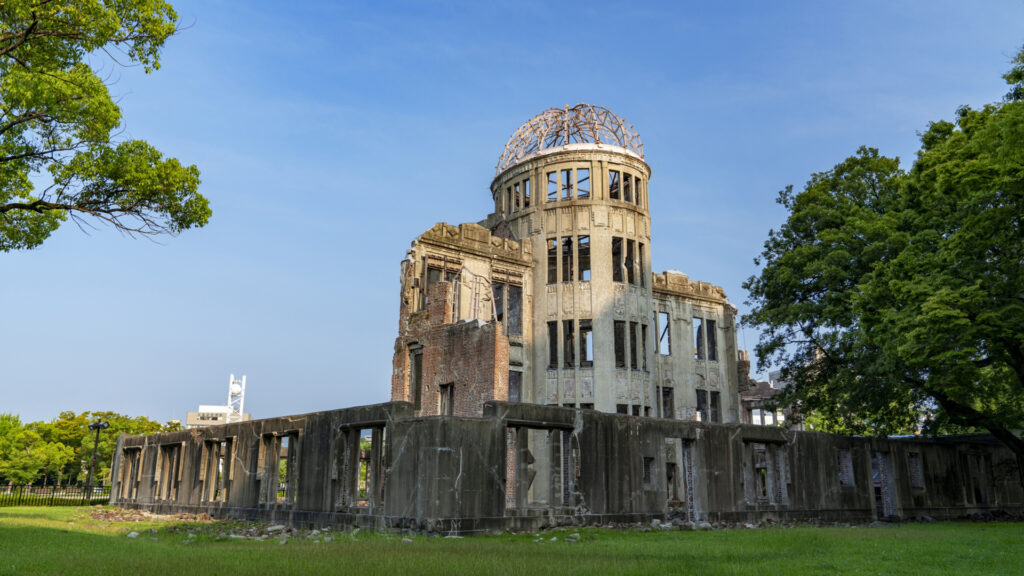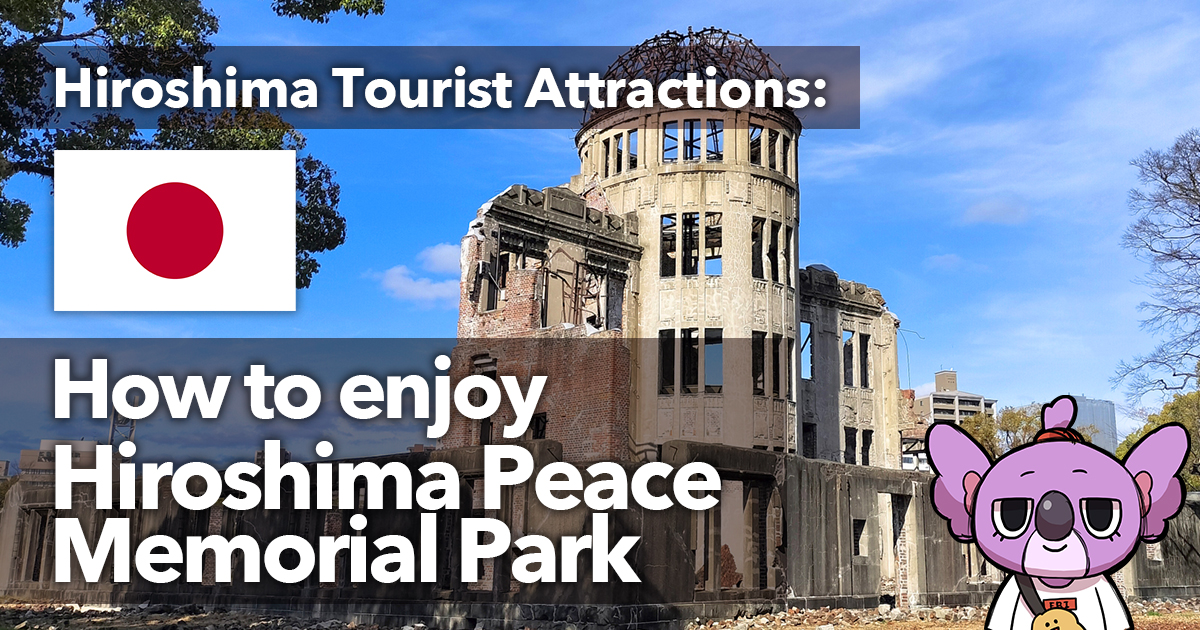Introduction

Hiroshima Peace Memorial Park is an iconic tourist attraction located in the city of Hiroshima, Japan, that deeply touches visitors from around the world. The park was built on the site of the atomic bomb dropped on Hiroshima on August 6, 1945, and sends a message of peace and nuclear abolition to the world.
The charm of Hiroshima Peace Memorial Park lies in its historical significance and beautiful scenery. There are many monuments and memorials in the park, of which the Atomic Bomb Dome is particularly famous. The Atomic Bomb Dome is part of a building that collapsed as a result of the atomic bomb blast and is a UNESCO World Heritage Site. The dome leaves a strong impression on many visitors as a symbol that conveys the horrors of war and at the same time stresses the importance of peace.
The Hiroshima Peace Memorial Museum is another must-see attraction in the park. The museum exhibits in detail the damage caused by the atomic bomb and the subsequent reconstruction of the city. Testimonies from A-bomb survivors, artifacts, and photographs are on display, providing visitors with opportunities for deep contemplation.
Also not to be missed are the Peace Lights and the Peace Bell in the park. The Peace Lamp is lit with a pledge to “keep it burning until there are no more nuclear weapons on earth. Visitors to the park will see the light and renew their commitment to peace. Visitors are free to ring the Peace Bell, the tone of which symbolizes the wish for peace.
Hiroshima Peace Memorial Park is filled with cherry blossoms in the spring, conveying the message of peace along with beautiful flowers. Visitors can also enjoy the natural beauty of the four seasons and discover something new each time they visit.
This article details how to enjoy Hiroshima Peace Memorial Park. We hope you will find it a useful guide to enhance your valuable experience in Hiroshima by covering all the information you need to gather before your visit. Visit Hiroshima Peace Memorial Park and fully enjoy its history, beautiful scenery, and message of peace.
History and Culture of the Sightseeing Area

Hiroshima Peace Memorial Park is a tourist attraction that strongly influences visitors from around the world because of its deep history and cultural significance. This section details the historical background and cultural features of Hiroshima Peace Memorial Park.
Historical Background
Hiroshima Peace Memorial Park is located near the hypocenter of the atomic bomb dropped on Hiroshima on August 6, 1945. The bomb devastated the city of Hiroshima, killing more than 140,000 people. After the war, the city of Hiroshima established Peace Memorial Park in 1954 to remember this tragedy and renew its pledge for peace.
The Atomic Bomb Dome has been preserved as graphic evidence of the devastation of that time. The building was originally used as the Hiroshima Prefectural Industrial Promotion Hall, but was almost completely destroyed by the atomic bomb. Today, the dome is a symbol of the horrors of war and the importance of peace, and is on UNESCO’s World Heritage List.
Cultural Features
Hiroshima Peace Memorial Park is a cultural symbol of peace and the bonds of humanity. Many monuments are located in the park, including the Peace Lamp, the Peace Bell, and the Statue of the Children of the Atomic Bomb. These monuments were set up to spread the message of peace, and many visitors come to express their wishes for peace.
The Peace Lamp was installed in 1964 and pledges to keep burning until the day that nuclear weapons are eliminated from the earth. The light is a powerful reminder to visitors of the importance of peace. Anyone is free to ring the Peace Bell, and its echo symbolizes the wish for peace.
The Hiroshima Peace Memorial Museum also features exhibits detailing the damage caused by the atomic bomb and the subsequent reconstruction of the city. Through the testimonies of A-bomb survivors, artifacts, and photographs, visitors can learn about the tragedy of war and the importance of peace. The museum provides visitors with opportunities for deep reflection and a deeper understanding of peace.
Hiroshima Peace Memorial Park is an important place to remember the tragic history and to build peace for the future. A visit to this park will leave you with a deep understanding of the tragedy of war and the importance of peace.
Places to visit

Hiroshima Peace Memorial Park, with its deep history and beautiful scenery, offers many inspirations to visitors. Here are some suggestions for the best time of year to visit Hiroshima Peace Memorial Park, its main attractions, and some things to keep in mind when touring the park.
Suggested times of year
The best times to visit Hiroshima Peace Memorial Park are spring and fall. In spring (March through May), the cherry blossoms are in full bloom and the entire park turns a beautiful pink color. Especially during the cherry blossom season, the park is crowded with many tourists, making it the perfect time to enjoy cherry blossom viewing. Autumn (September to November) is beautiful with the changing of the leaves, and the trees in the park change colors, allowing visitors to enjoy a leisurely stroll in the mild climate.
Major Sightseeing Attractions and Popular Spots
Hiroshima Peace Memorial Park offers many attractions. Below are some of the most popular spots that you should not miss when visiting.
- A-Bomb Dome: This UNESCO World Heritage Site is a symbol that tells the story of the tragedy of the atomic bombing. It is a profound reminder of the horrors of war and the importance of peace.
- Hiroshima Peace Memorial Museum: This museum exhibits in detail the damage caused by the atomic bomb and the subsequent reconstruction. The exhibits include testimonies, artifacts, and photographs of A-bomb survivors, providing visitors with an opportunity for deep contemplation.
- Peace Lamp: This light, installed in 1964, pledges to burn until the day that nuclear weapons are eliminated from the earth. Many people visit to express their wishes for peace.
- Peace Bell: Visitors are free to ring the bell, the sound of which symbolizes the wish for peace. By ringing the bell, visitors can share their feelings for peace.
- Statue of the Children of the Atomic Bomb: This statue commemorates the children who sacrificed their lives for peace, and many paper cranes are dedicated to them. It is especially famous for the episode of Sadako Sasaki and her wish for peace.
Points of Attention at the Sightseeing Spot
When visiting Hiroshima Peace Memorial Park, it is best to keep in mind a few things to keep in mind.
- Keep Quiet: The park is a place of peace and remembrance, so it is important to visit quietly and respectfully.
- Take out your trash: The park is kept beautiful, so please help protect the environment by taking out your trash.
- Photography Considerations: Photography is allowed, but please remember to be respectful of other visitors and the artifacts of A-bomb survivors.
Access
Access to Hiroshima Peace Memorial Park is very convenient and easily accessible by many modes of transportation. Below are some of the major access options.
Access from Hiroshima Station
Hiroshima Station is a major transportation hub with Shinkansen bullet trains and local trains. Here are some ways to access Hiroshima Peace Memorial Park from here.
If you use the streetcar (Hiroshima Electric Railway).
- The most convenient way to get to Hiroshima Peace Memorial Park is to take the Hiroshima Electric Railway (Hiroden) streetcar from Hiroshima Station: take Line 1 (bound for Hiroshima Port) or Line 3 (bound for Nishi Hiroshima) and get off at the Atomic Bomb Dome-mae stop. The trip takes about 15 minutes.
- From the stop, it is approximately a 2-minute walk to Peace Memorial Park.
By bus** (**)
- Buses to Hiroshima Peace Memorial Park are also available from the Hiroshima Bus Center. Take the bus and get off at the “Peace Memorial Park” stop. The trip takes about 20 minutes.
- From the bus stop, it is approximately a 1-minute walk to the park.
If you take a taxi.
- A cab from Hiroshima Station will take approximately 10 minutes. The time may vary slightly depending on traffic conditions, but you will arrive at the park smoothly.
Access from Hiroshima Airport
The following is how to get to Hiroshima Peace Memorial Park from Hiroshima Airport.
Taking the Limousine Bus.
- From Hiroshima Airport, board a limousine bus bound for Hiroshima City and disembark at the Hiroshima Bus Center. The trip takes about 60 minutes.
- From the Hiroshima Bus Center, it is approximately a 10-minute walk to Peace Memorial Park.
If you take a taxi.
- A cab from Hiroshima Airport will take approximately 45 minutes. It is recommended as a comfortable and convenient means of transportation.
Hours of Operation, Admission Fees
Hiroshima Peace Memorial Park is open all year round to provide visitors with a place to learn about the importance of history and peace. Here are the opening hours and admission fees for the major facilities in the park.
Hiroshima Peace Memorial Museum
Hiroshima Peace Memorial Museum is the central facility in the park, where visitors can learn more about the damage caused by the atomic bomb and the subsequent reconstruction.
Opening Hours.
- March through July: 7:30 a.m. to 7:00 p.m.
- August: 7:30 a.m. to 8:00 p.m.
- September through November: 7:30 a.m. to 7 p.m.
- December to February: 7:30 a.m. to 6:00 p.m.
- Last admission is 30 minutes before closing.
Admission Fee.
- Adults: 200 yen
- High school students: 100 yen
- Junior high school students and younger: Free
- Group discounts are available; please check the official website for details.
Statue of the Children of the Atomic Bomb
The Statue of the Children of the Atomic Bomb is a symbolic monument in the park where visitors offer paper cranes with their wishes for peace.
Open Hours.
- Open 24 hours a day, visitors are welcome at any time.
Admission.
- Free
Peace Bell
The Peace Bell is a monument that anyone can freely ring and its tone symbolizes the wish for peace.
Opening Hours
- Open 24 hours a day, visitors are welcome at any time.
Admission Free
- Free
Summary

Hiroshima Peace Memorial Park is located in the city of Hiroshima, which was damaged by the atomic bomb dropped in 1945, and conveys the importance of peace to visitors from all over the world. The park contains many monuments and memorials, of which the Atomic Bomb Dome is particularly famous. Listed as a UNESCO World Heritage Site, it symbolizes the tragedy of war and the importance of peace. Visitors can also learn more about the damage caused by the atomic bomb and the subsequent recovery at Hiroshima Peace Memorial Museum, where testimonies and artifacts from the bombing are on display.
The best times to visit Hiroshima Peace Memorial Park are spring and fall, when the cherry blossoms and autumn leaves are at their most beautiful. Don’t miss the Peace Lights, the Peace Bell, and the Statue of the Children of the Atomic Bomb in the park. The park is open 24 hours a day, and the Hiroshima Peace Memorial Museum is open from 8:30 a.m. to 7:00 p.m. maximum, although hours vary depending on the season. Admission to the museum is 200 yen for adults, 100 yen for high school students, and free for junior high school students and younger.
Access is convenient: from Hiroshima Station it is about 15 minutes by streetcar, and from Hiroshima Airport about 60 minutes by limousine bus. It is important to visit the park in a quiet and respectful manner, and to remember to take your trash with you and take photos.
Hiroshima Peace Memorial Park is a valuable place to learn about history and to gain a deeper understanding of the importance of peace. A visit will leave you with a lasting impression of the tragedy of war and the importance of peace. We hope that your visit to Hiroshima Peace Memorial Park will make your trip even more special.



